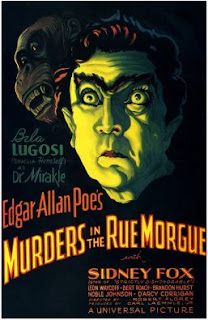(1933)
Directed by Raoul Walsh
Written by Howard Estabrook, James Gleason from a novel by Michael.L. Simmons and Besse Roth Solomon
Staring Wallace Beery, George Raft, Jackie Cooper, Fay Wray
IMDB Entry
Wallace Beery is an unlikely leading man -- not what anyone would consider handsome -- but he was one of the biggest names in Hollywood in the early30s. He specialized in playing men who were gruff on the outside but who had a heart of gold. The Bowery is a good example of his work.
Chuck Connors* (Wallace Beery) is the king of the Bowery** in the 1890s. His tavern is always packed and he led his own fire brigade.*** He also has taken in Swipes McGurk (Jackie Cooper) a street kid who is on his own. Connors is challenged by the debonair Steve Brodie (George Raft), who has his own fire brigade and competes with him to be king.
Connors comes upon Lucy Calhoun, a new girl in town, as a couple of pimps try to recruit her. He chases them off, and later, Lucy asks him for help. He takes pity on her and takes her in as a housekeeper. Brodie gets wind of it and thinks at first she's Connors's mistress, but, when he learns the truth, the starts to go out with her -- keeping it secret from Connors.
In order to make himself better known, Brodie decided to jump off the Brooklynn Bridge.**** A bet with Connors makes him owner of Connors's saloon. Connors fights back.
Beery is delightful. Definitely his gruff personality with a heart of gold fits him perfectly, and the heart of gold part is never obtrusive. Cooper was a big star at the time after graduating from the Our Gang comedies. He was successful as an actor after growing up, playing the lead in the sitcoms The People's Choice and Hennessey, and appearing as Perry White in the Christopher Reeve Superman movies.
George Raft is best known for gangster movies. His schtick was to be constantly flipping a coin, something he originated in Scarface, and which became iconic. Unfortunately, he made a series of bad choices, including rejecting the roles that made Humphrey Bogart a star.
Of course, and film buff worth his salt recognizes Fay Wray. What I've been discovering that she was a busy lead actress before that.
Director Raoul Walsh was extremely successful, directing films into the 60s, including The Roaring Twenties, They Drive by Night, They Died with Their Boots On, Bogart's High Sierra, and the classic James Cagney film, White Heat.
The movie is charming, if slightly melodramatic for modern tastes, but it never stops being interesting.
______________________________________________________________
*No relation
**A lower class section of New York city, known at the time for its taverns and rowdy doings.
***Accurate for the time. There were many small fire brigades in New York who competed to put out fires. They often fought each other at the scene, as portrayed in the movie.
****Based on the real Steve Brody, who gained fame doing it.


